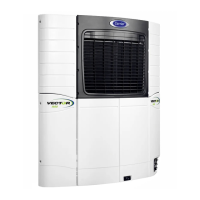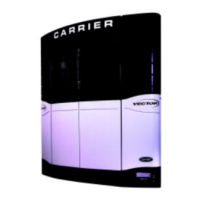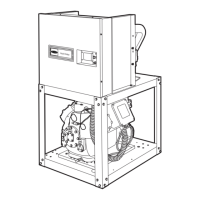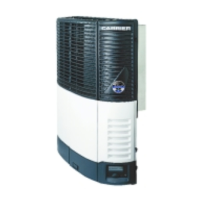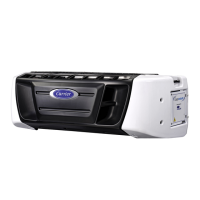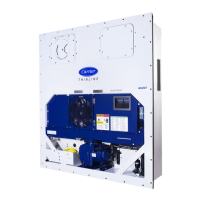7−16
62-11389
Alarm
NO.
Steps Alarm/Cause Corrective Action
22 LOW SUCTION SUPERHEAT
• TRIGGER ON: Compressor suction superheat (Compressor Suction Temperature [CST] minus satu-
rated temperature for Compressor Suction Pressure [CSP] refer to Table 8−7) is less than 9°F
(5°C) for more than 2 minutes.
• UNIT CONTROL: Engine Operation: engine and unit shutdown and alarm.
Standby Operation: refrigeration system shutdown and alarm with PSCON
still energized.
• RESET CONDITION: Auto reset after 15 minutes, or alarm may be manually reset via keypad or by
turning the unit off, then back on again.
NOTE: Follow the steps below until a problem is found. Once a repair or correction has been made, the active
alarm should clear itself (see reset condition above). Operate the unit through the appropriate modes to see if
any active alarm occurs. Continue with the steps below as necessary.
1 Check System Pressures
Install manifold gauge set and check
and compare compressor discharge
& suction pressures and evaporator
outlet pressure with those shown on
the microprocessor display.
Suction & Discharge Pressures must have the same
reading on gauges & on microprocessor display.
NOTE: Microprocessor suction (CSP) and evaporator
(EVOP) pressure readings have a maximum value of
100 psig (7.5 bar) The actual suction pressure must
be lower than 100 psig in order to perform this test.
2 Check Refrigerant Charge
Check for undercharged system. Refer to Section 8.6.2.
3 Check For Restricted Evaporator Airflow
Check for restricted evaporator air-
flow.
Check for proper Evaporator Fan operation (Refer to
Section 8.9.6.)
Check for correct Evaporator Fan rotation.
Check defrost air switch setting and hoses. Refer to
Section 8.8.9.
Check for restricted bulkhead or air chute installation.
4 Perform Pretrip Check
Clear Active Alarm list, then run Pre-
trip & check for any new alarms.
Any active alarms must be corrected and cleared
before proceeding.
5
Check Compressor Suction Temperature (CST) and Evaporator Outlet Temperature
(EVOT) sensors.
a. Inspect CST & connector. No damage to sensor.
No damage, moisture, or corrosion in connector.
b. Check CST resistance.
(See Note 3 page 7−2.)
10,000 Ohms @ 77°F (25°C) Refer to Table 8−5 for
complete table of temperatures and resistance val-
ues.
c. Check voltage at harness connec-
tion to CST.
Must be 2.5 $ 0.5 VDC. This verifies microprocessor
output and wiring connections to sensor.
d. Verify accuracy of CST using in-
frared or other accurate temperat-
ure testing tool.
CST reading must be within $3°F (1.7°C) of test
temperature tool reading.
Additional steps on the next page.
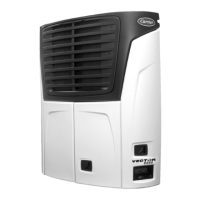
